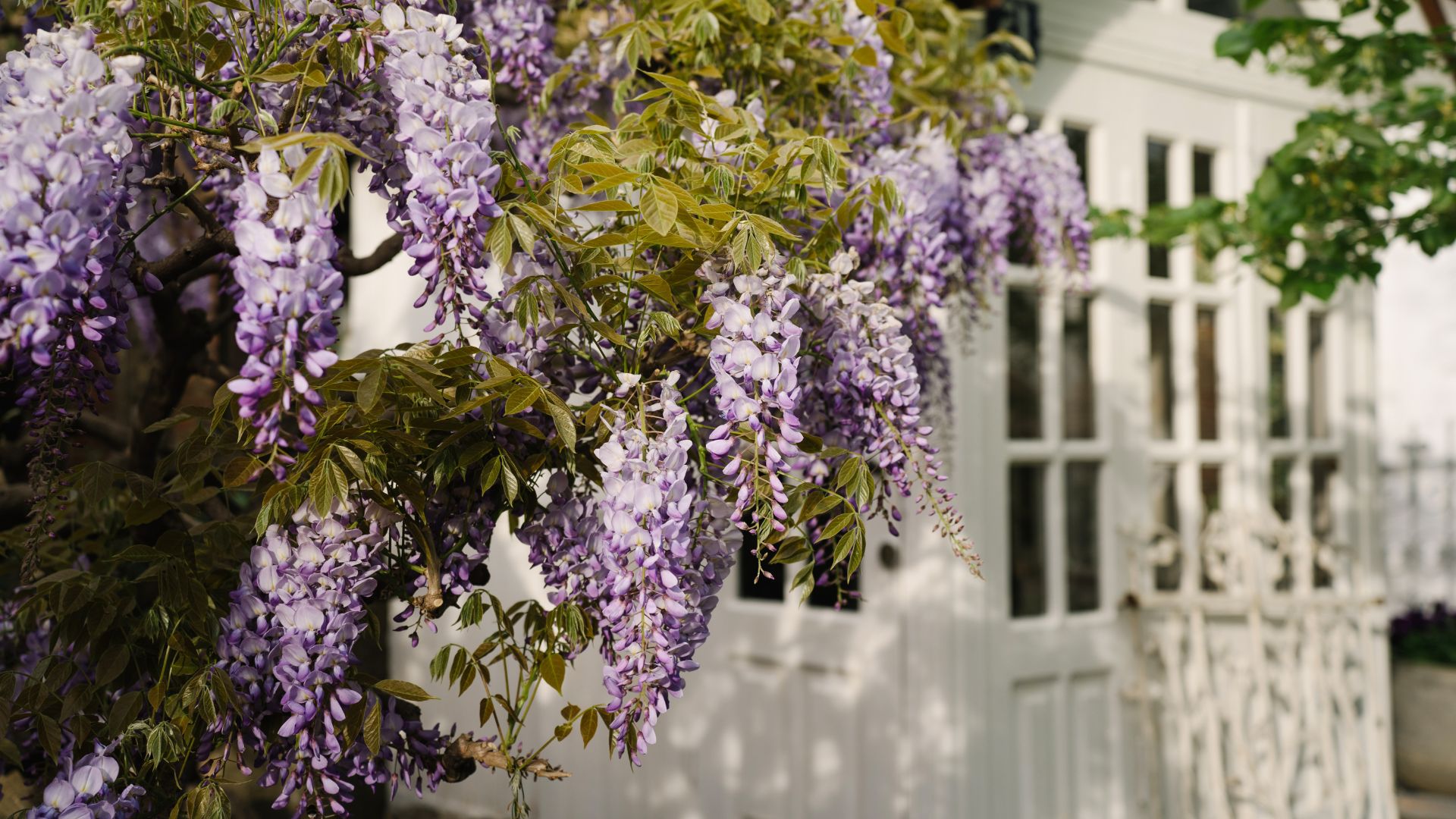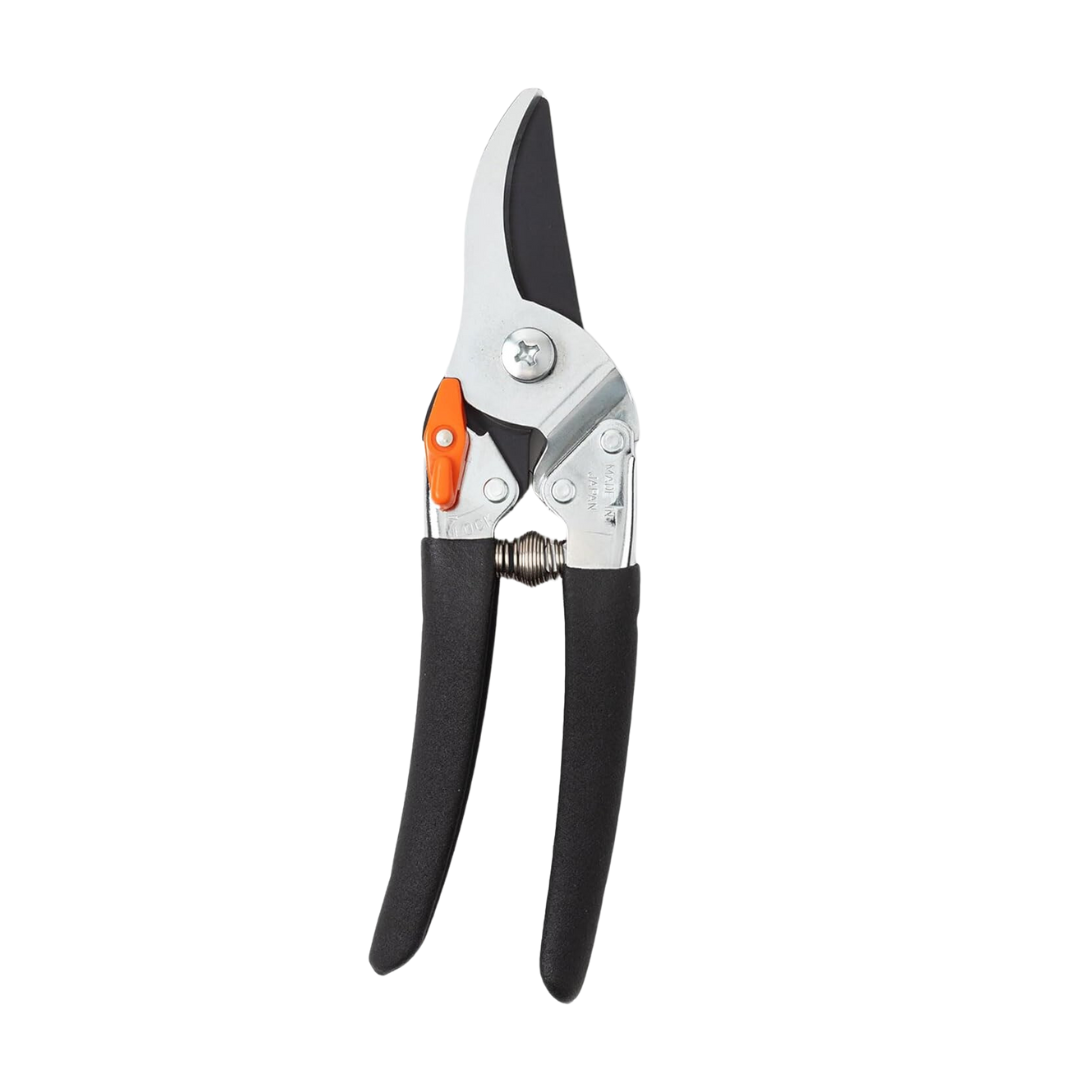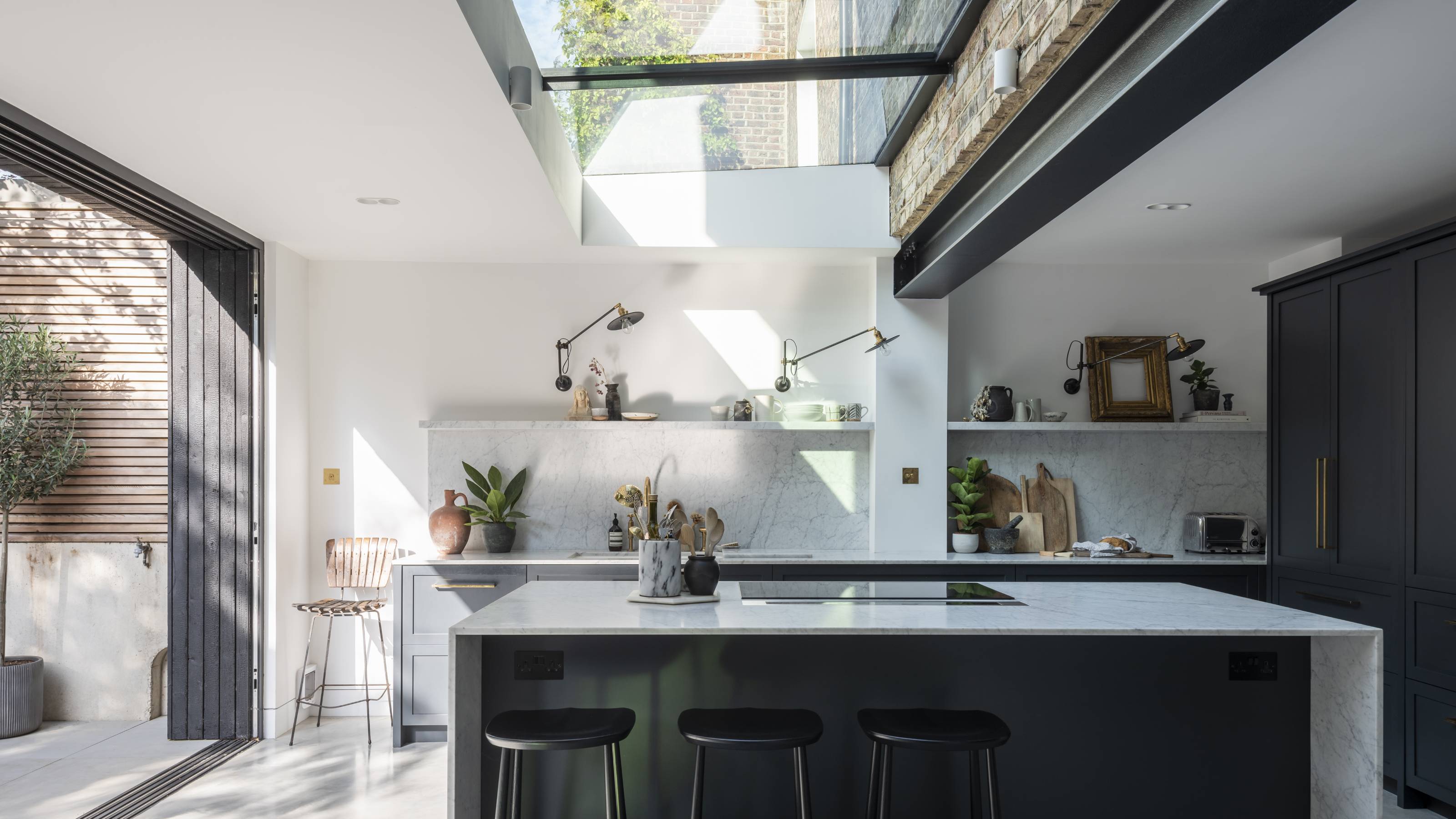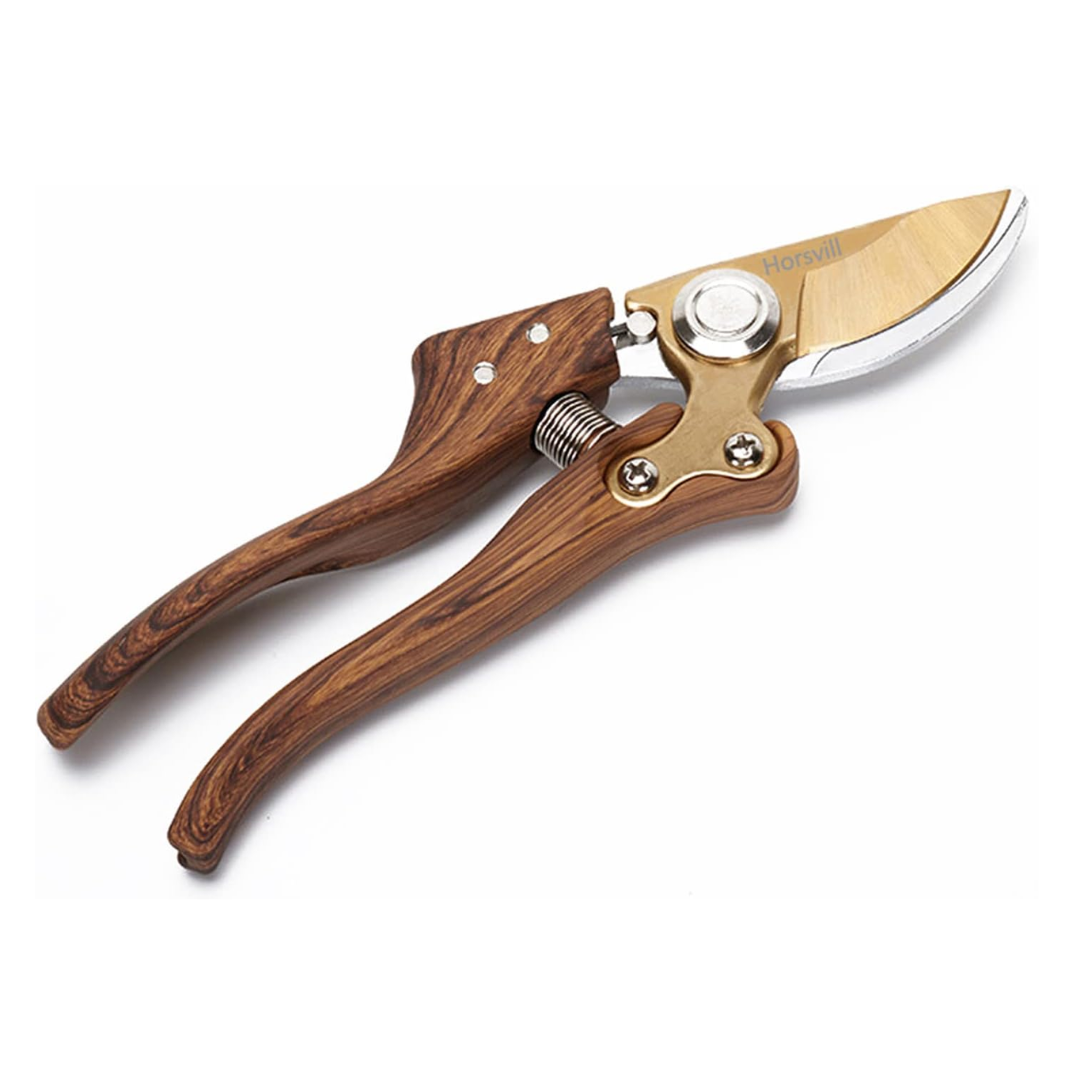When to Prune Wisteria — Expert Advice to Guarantee Beautiful Blooms Come Spring
Trim this vigorous plant when it's dormant for a spectacular show in the upcoming seasons

With its beautiful lavender-colored blooms, wisteria is a popular choice for gardens, pergolas and property facades. However, knowing when to prune wisteria in winter will have a bearing on where this pretty plant grows and how it flowers in spring and summer.
Although beautiful, this vigorous vine needs to be kept under control. Trimming it at the right time and in the right way is essential. If you're unsure how to prune plants, our gardening experts can guide you through when and how to trim back wisteria.
Following the advice ahead will not only ensure that this climber flourishes, it will prevent your wisteria smothering other species, so that they can flourish too.
When to Prune Wisteria

As one of the best fast-climbing plants for privacy, Wisteria grows rapidly. So it benefits from a biannual trim, both in the summer and in winter, when the plant is dormant. This trains the vine and encourages new blooms.
New York-based landscape designer, Kat Aul Cervoni, founder, Staghorn Livin explains why for most gardeners in the northern hemisphere, pruning wisteria should be done twice a year and when. "Prune your wisteria once in the summer (July/August) after the spring flush of flowers is finished and a second time in winter (January/February) ahead of springtime growth but while the plant is dormant," says Kat.
Kat continues: "In warmer climates, pruning in summer may need to be done more than once to control growth. The two-season pruning model can be followed for all three species (Chinese, Japanese and North American), but more aggressive pruning will likely be needed for the two Asiatic species due to their much more vigorous growth tendencies. Pruning in winter helps with the shape and structure. lt also allows for the removal of any dead or wayward growth which will help the plant direct energy towards flowering in spring."
"Biologically there are some benefits to pruning wisteria in winter, but importantly there are no leaves left to obstruct your view of the branch structure," explains professional gardener, David Angelov, founder, Plant Parenthood Design, Massachusetts.
"It's a vigorous plant, so pruning wisteria in late summer allows you breathing room and less pruning in winter. The winter pruning is for the shaping cuts that you do to set up buds for next year. It’s easier to do this once another pruning has been done already."
How to Prune Wisteria

Whether you have your wisteria as a climbing plant for the front of your house, or draped over a pergola, once the leaves have dropped you will get a better view of the structure. So stand back and inspect the plant before you begin to prune it.
"If you have a view of the whole mature stem, plan out in your head which mature pieces you're going to leave," says David. "Those will be the main trunk – the architecture of the Wisteria — and they dictate where it will grow and what it will wrap around.
"I then like to get up close, and start at the farthest end, the tips. Starting from the ends, I cut back to the main stem, leaving two leaf nodes, above the node, which will reveal the structure that you want. It will allow for a cleaner look, it's a tried and true system," David continues. "Whether you have flowers next year or not, the plant will be neat and more ready for flowers the following year. If you stay in that cycle, the wisteria becomes manageable."
Kat tells us: "Once you have inspected the plant, you can also remove any dead, diseased, or damaged wood. Be sure to eliminate crossing branches to improve airflow. This is also the time to remove unwanted growth, like long, wispy shoots or overcrowded spots or any suckers at the base of the plant.
"Cutting back shoots to 2-3 buds from the base will encourage better flowering and those buds will form flowering spurs. For timing, choose a milder, dry day to avoid frost damage and be sure to use clean sharp tools for precise cuts."

Price: $29.80
Made with premium steel blades, this pruning shear is comfortable to use and is ideal for tough branches and stems.
FAQs
Is Wisteria an invasive plant?
Wisteria grows rapidly, so it has a reputation for being invasive, particularly imported varieties that can quickly smother other plants, and it is a climbing plant that many avoid, and it's banned in some states.
"Both the Chinese (sinensis) and Japanese (floribunda) wisterias are considered invasive in the US, particularly in the Southeast where a warmer climate allows them to quickly grow out of control and smother other native species," says Kat. "The asiatic varieties are the most aggressive growers, so must be managed to prevent unwanted spread. There are two species native to North America, wisteria fructescens and wisteria macrostachya, that have a similar aesthetic, but grow at less explosive rates and so are much easier to manage."
"Any wisteria can potentially become invasive, even native species," says professional gardener, David Angelov, founder, Plant Parenthood. "How you manage it (or not) can make it invasive. It might have gorgeous flowers but if your Wisteria is wrapping around a satellite dish, it’s becoming invasive. So when planning to plant it, know what it could wrap around.
David says you should avoid planting wisteria next to cables, "or next to anything else that is alive. It can choke out a tree trunk; it can smother and not allow light to penetrate down, even if it’s a native species."
He adds: "That said, my general rule of thumb for buying plants is to buy from a local nursery. Stay away from buying online, as you can get unlabelled wisteria sinensis. However, if you buy from a local nursery, there a multiple people who will make sure the plant is healthy and that there are no invasive pests in the soil. Also the plant is already adjusted to the local climate."
Be The First To Know
The Livingetc newsletters are your inside source for what’s shaping interiors now - and what’s next. Discover trend forecasts, smart style ideas, and curated shopping inspiration that brings design to life. Subscribe today and stay ahead of the curve.
Jacky Parker is a London-based freelance journalist and content creator, specialising in interiors, travel and food. From buying guides and real home case studies to shopping and news pages, she produces a wide range of features for national magazines and SEO content for websites
A long-time contributor to Livingetc, as a member of the team, she regularly reports on the latest trends, speaking to experts and discovering the latest tips. Jacky has also written for other publications such as Homes and Gardens, Ideal Home, Red, Grand Designs, Sunday Times Style and AD, Country Homes and Interiors and ELLE Decoration.
-
 The 'New British' Style? This Victorian London Home Embraces Its Owners' Global Background
The 'New British' Style? This Victorian London Home Embraces Its Owners' Global BackgroundWarm timber details, confident color pops, and an uninterrupted connection to the garden are the hallmarks of this relaxed yet design-forward family home
By Emma J Page
-
 Muji Living Room Ideas — 5 Ways to Harness The Calming Qualities of This Japanese Design Style
Muji Living Room Ideas — 5 Ways to Harness The Calming Qualities of This Japanese Design StyleInspired by Japanese "zen" principles, Muji living rooms are all about cultivating a calming, tranquil space that nourishes the soul
By Lilith Hudson
-
 These Are the Dos and Don'ts of Bamboo Plant Placement — Follow This to Avoid Bad Feng Shui
These Are the Dos and Don'ts of Bamboo Plant Placement — Follow This to Avoid Bad Feng ShuiBy following the experts' guidance on where to place this houseplant you can usher luck, wealth, and prosperity into your home
By Lilith Hudson
-
 Is It Okay to Have a Mirror Facing a Door in Feng Shui? The Verdict Is In and It Just Might Surprise You
Is It Okay to Have a Mirror Facing a Door in Feng Shui? The Verdict Is In and It Just Might Surprise YouDecorating your home with mirrors calls for intention if you're dressing your space in accordance with Feng Shui. Here's what you should know.
By Amiya Baratan
-
 4 Things to Unpack as Soon as You Move House — For a Comfortable and Organized Fresh Start
4 Things to Unpack as Soon as You Move House — For a Comfortable and Organized Fresh StartIf you have a major move in the works and you're looking to prepare in advance, this is the starter kit you need to properly set up your new home.
By Amiya Baratan
-
 10 Decluttering Challenges to Have on Your Radar This Year — For a Tidier, More Mindful Home
10 Decluttering Challenges to Have on Your Radar This Year — For a Tidier, More Mindful HomeIf you're interested in transforming your home for the better, here are 10 decluttering challenges I recommend for a professionally tidy space.
By Amiya Baratan
-
 Biophilic Decluttering — What to Take Out of Your Home (and What to Put in) for a More Natural Home
Biophilic Decluttering — What to Take Out of Your Home (and What to Put in) for a More Natural HomeTry your hand at biophilic decluttering to ground your interiors, connect to the environment, and cure chronic clutter in one go. Here's how.
By Amiya Baratan
-
 The 10 Different Types of Kitchen Taps — And the Pros and Cons of Each One to Know Before You Pick
The 10 Different Types of Kitchen Taps — And the Pros and Cons of Each One to Know Before You PickFrom sleek pull-outs to vintage bridge taps, explore 10 kitchen tap styles that mix function, flair, and a splash of cool
By Linda Clayton
-
 How Much Does an Extension Cost in 2025? Renovation and Design Experts Break Down Your Budget
How Much Does an Extension Cost in 2025? Renovation and Design Experts Break Down Your BudgetExplore how much different types of extensions cost in 2025 to budget for your project accurately
By Amy Reeves
-
 9 Bathroom Storage Mistakes You're Probably Making That Make Using This Space Much Harder — And What to Do Instead
9 Bathroom Storage Mistakes You're Probably Making That Make Using This Space Much Harder — And What to Do InsteadDiscover which mistakes are to blame for your overcrowded and cluttered bathroom
By Seraphina Kyprios

